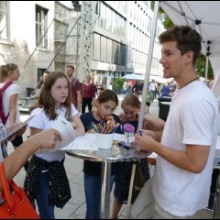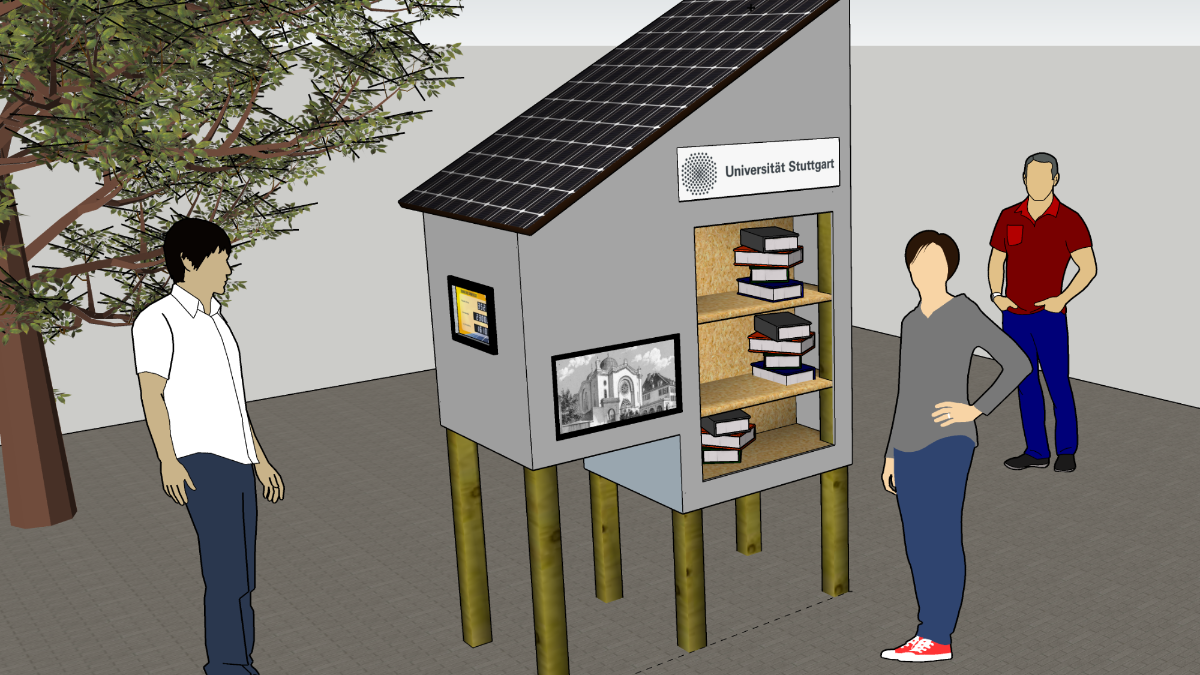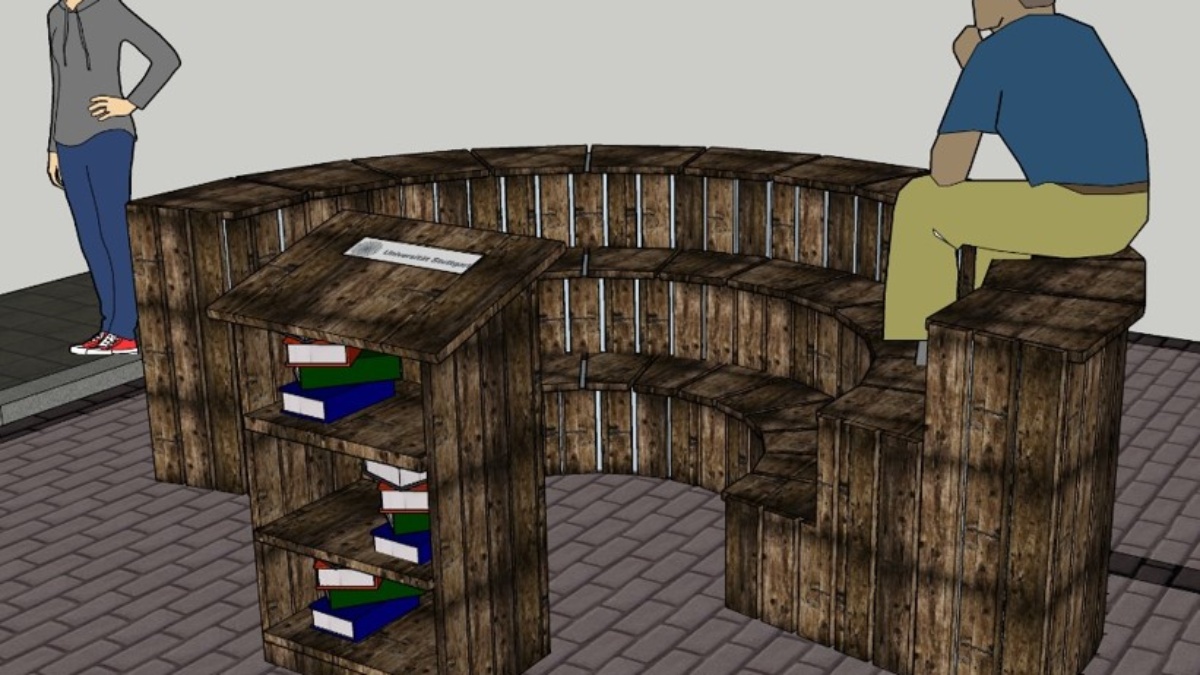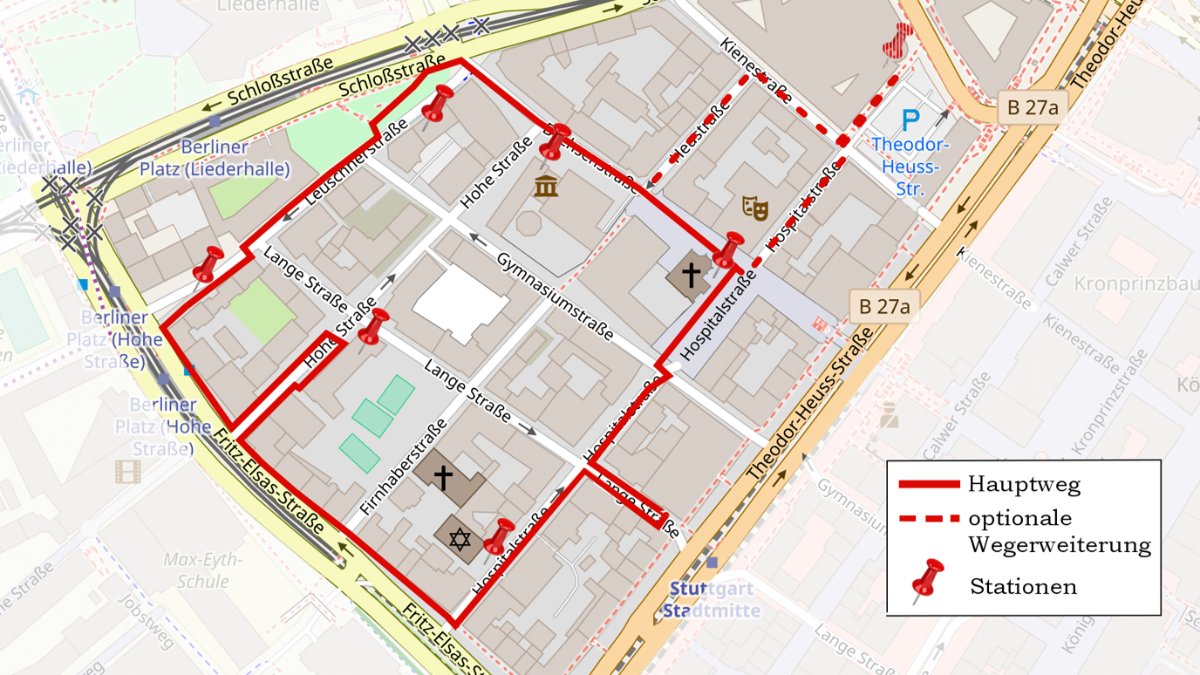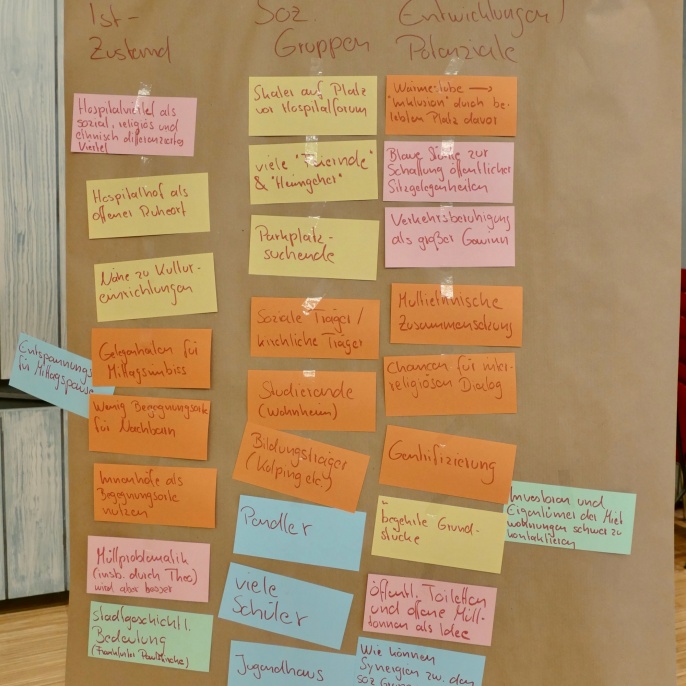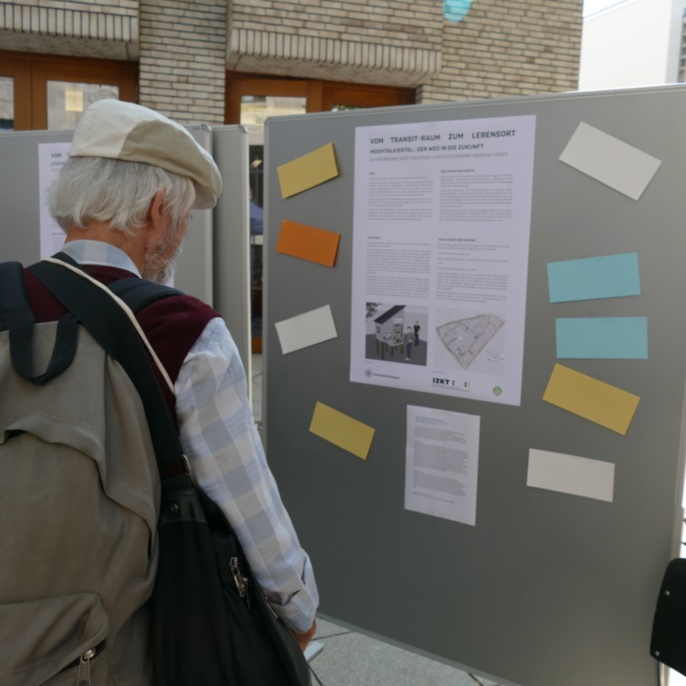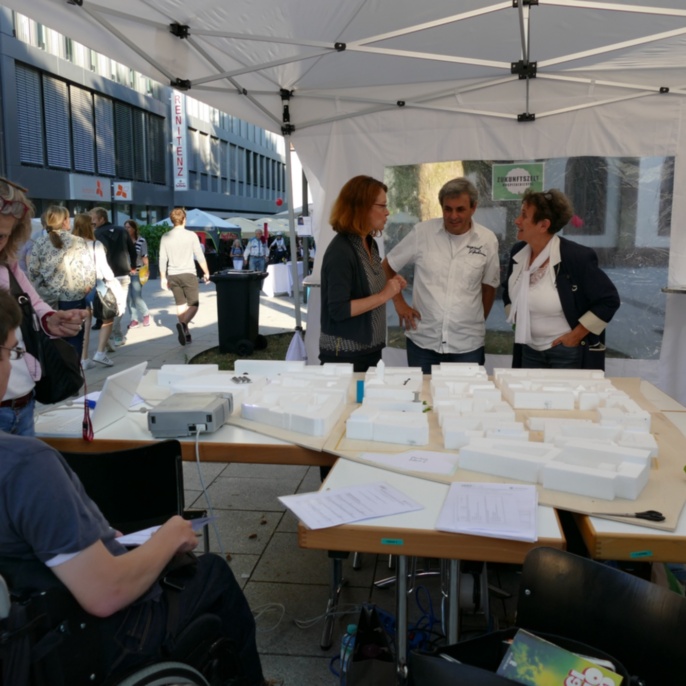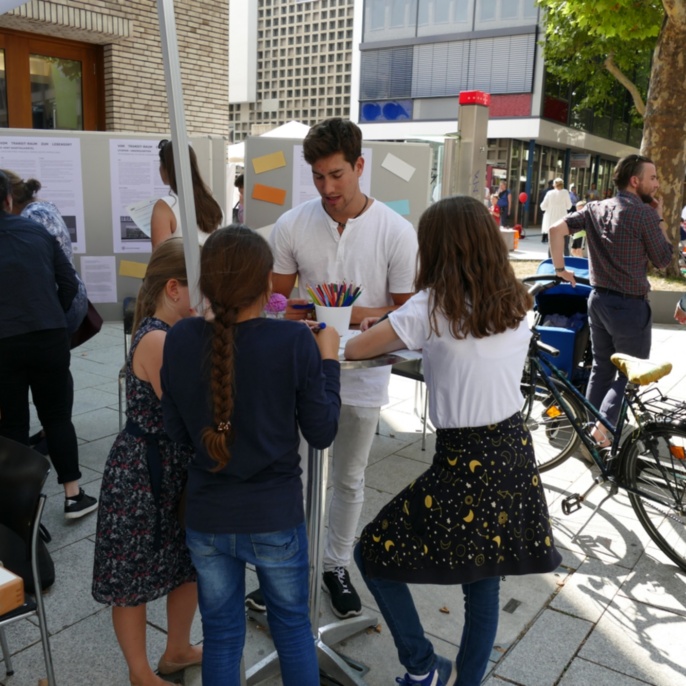How can the quality of life be increased in Stuttgart’s hospital quarter? Scientists and students at the University of Stuttgart started a pilot project on this subject in 2018: “From a Transit Zone to a Place to Live. Sustainable Quality Development in the Hospital Quarter. Energy – Mobility – Life Quality”. They worked together with local residents as well as the Hospitalviertel e.V. forum to develop ideas to make the hospital quarter more livable for those who live there.
In the pilot project, researchers in town planning, energy research and social sciences worked together across disciplines and developed a concrete research and transfer design. Their aim is to promote cooperation between science and local residents. The pilot project forms part of the larger project “Science for the City in the City of Science”. This is the reason why the International Center for Cultural and Technological Studies (IZKT) at the University of Stuttgart applied to organize the know-how and the knowledge transfer at the University.
A difficult starting point in the hospital quarter
The quarter is faced with a variety of challenges. Despite its central position, it is a neglected part of the city. 5000 people travel into the hospital quarter every day for work, but only around 1000 people live there. The neighborhood is a transit zone. This is reflected in its spatial structure, its forms of use and in its traffic patterns. There are 72 different nationalities represented among the population. Single-person households are the norm. The number of unemployed people and people under 65 years old who are reliant on a basic income is more than twice the Stuttgart average. Gentrification is starting to occur as a consequence of the renovation work. This means that the local population are being displaced by those who are better off.
The starting point for the pilot project was as follows: How can a transit zone be made into a lively space with a future? How can people be made to feel at home in the quarter? How can the hospital quarter be made fit for the future, not just in terms of technology but also taking sociocultural aspects into account? Students and scientists developed concrete suggestions by speaking with local residents. Their idea was to carry out real experiments, which they could then use to raise awareness of the opportunities that forward-looking urban development can provide.
Student-developed concepts
Elke Uhl, Head of the IZKT, enthusiastically said that “With our project we want to help people to find their way around the neighborhood better. The students have figured out a signposting system using a combination of signs, floor markings, maps or visual displays. This has created routes to various places in and through the quarter.” Another group of students has designed solar-powered mobile stations. These stations invite you to learn more about the history of the respective places, either digitally or by means of physical info points. “The students have also tested new methods of scientific communication”, says Uhl. “They sprinkled and evaluated hashtags via social media.” Another suggestion is joint “e-vents” to raise awareness of the energy revolution, renewable energies and suitable forms of transport for the area. One example would be an electric cargo bike that is jointly tested by two households.
Neighborhood party attracts local residents
The students worked on the project in the summer semester 2018. On July 12, 2018 they presented their ideas to the public at a neighborhood party. They showcased a scale model of the hospital quarter and set up a “marquee for the future”, with posters and film clips. Both adults and children gave their opinions on what they want for their neighborhood via a questionnaire.
Elke Uhl is pleased with the success of the project. “The Stuttgarter Zeitung newspaper wrote about how the IZKT had been invited to several talks and conferences and about how various follow-up projects had been set up, like for example a DAAD summer school called ‘City – Space – Democracy [de]. Transformation Potential in the Hospital Quarter’, which attracted participants from places like Porto, Lima and Buenos Aires.” The summer school was held online in October 2020.
Continuing the project successfully
A further outcome of the project was the creation of an instruction guide for transdisciplinary projects [de]. Uhl emphasizes: “Through the example of our project, which is intended to be both interdisciplinary and transdisciplinary, explorative and experimental, cooperative and participative, we can show why cooperations between science and local residents are important and the significant role that knowledge transfer can play in both directions.”
The project team was invited to present the project at the Baden-Württemberg Participation Congress [de] on October 8, 2020. However, the congress had to be postponed until 2021 due to the corona pandemic. Nevertheless, a launch event was held online. During the event, the start of work to create a digital, state-wide project database was announced by Gisela Erler, the State Counselor for Civil Society and Civic Participation in Baden-Württemberg. The knowledge transfer project is listed in this database, which recommends it as an example to follow.


